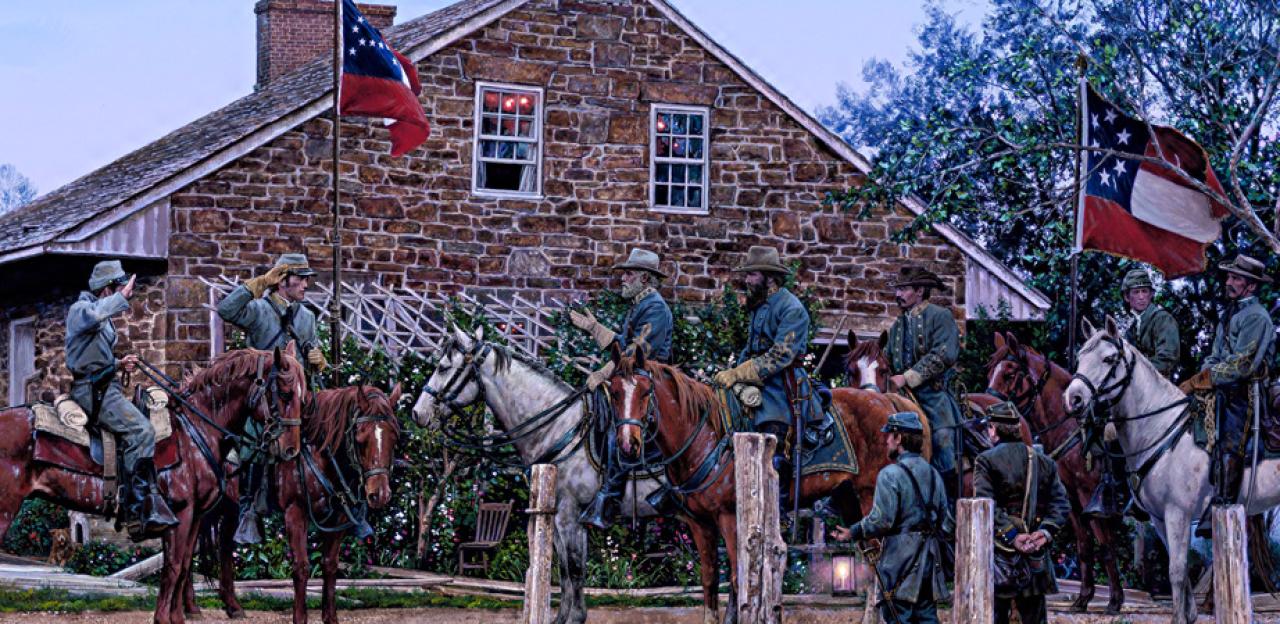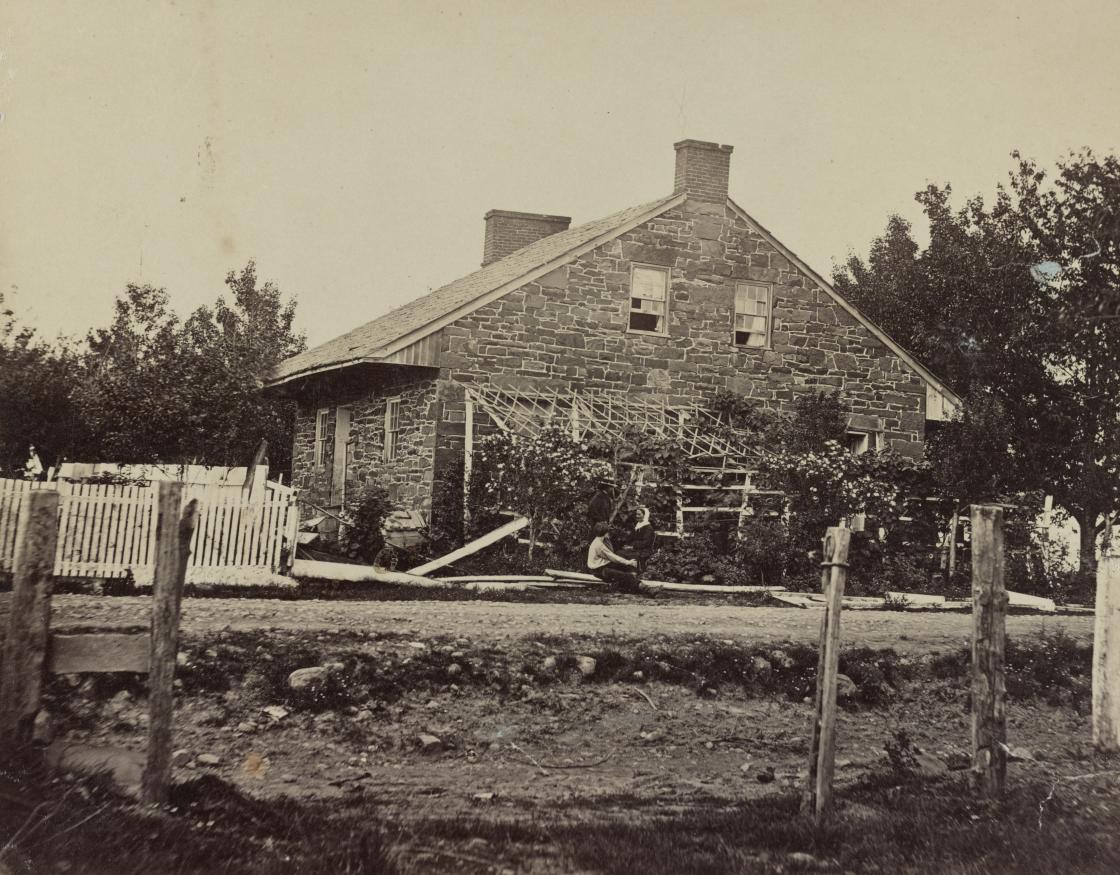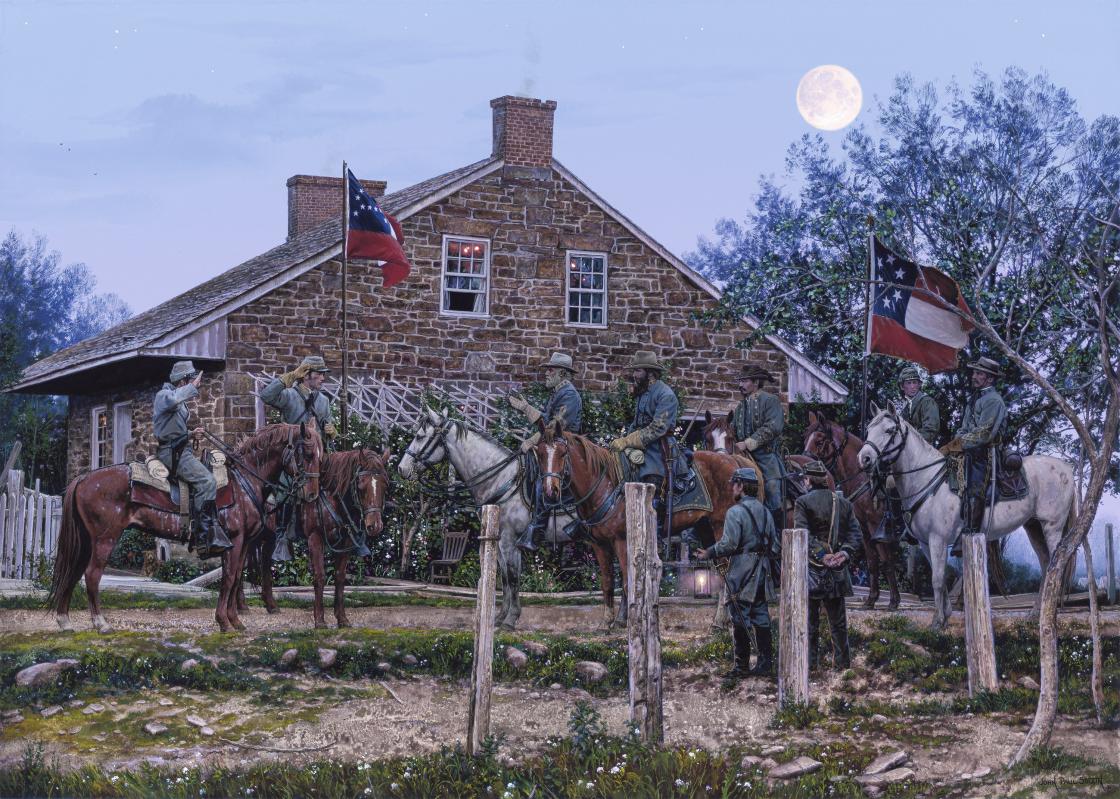Significance: Lee’s Headquarters at Gettysburg

In 2014, the Civil War Trust worked to preserve the Mary Thompson House, which served during the Battle of Gettysburg as both the headquarters of Gen. Robert E. Lee and the site of some of the bloodiest scenes of the battle. After a major fundraising effort, Lee's Headquarters was saved in 2015 and in 2016, the restoration progress kicked off. For the latest updates, check out our Lee’s Headquarters at Gettysburg Collection

What is Lee’s Headquarters?
Lee’s Headquarters, also known as the Mary Thompson House, is a one-and-a-half story stone house, situated on a 4.01-acre tract on the crest of Seminary Ridge, west of the town of Gettysburg on the north side of the Chambersburg Pike. During the Civil War the property was co-owned by Thaddeus Stevens, an influential and powerful Pennsylvania Congressman, and a 69-year-old widow named Mary Thompson. The still-extant James Henry Thompson House, owned by Mary’s son, is located on the south side of the road.

Why is it important?
On the afternoon of July 1, 1863, the Mary Thompson House and the land around it were caught in the maelstrom of a deadly and bloody struggle, as Confederate forces overran the final defensive positions of the Union 1st Corps west of Gettysburg. Union artillery and infantry occupied the section of Seminary Ridge on which the house still stands.
Three guns of James Stewart’s Battery B, 4th United States Artillery (commanded by Lt. Davison), were positioned directly on the property in question, a point from which they delivered raking canister fire into the ranks of General Alfred Scales’s North Carolinians (a government marker honoring the battery stands near the site). Scales reported that his brigade “encountered a most terrific fire of grape and shell on our flank, and grape and musketry on our front. Every discharge made sad havoc in our line, but still we pressed on at a double-quick until we reached a distance of about 75 yards from the ridge, and about the same distance from the college [Seminary]… Our line had been broken up, and now only a squad here and there marked the place where regiments had rested.”
Part of Union Colonel Roy Stone’s 2nd Brigade (specifically the 143rd Pennsylvania, which had never previously been under fire) also occupied the ground we seek to save, until being driven back by North Carolinians under General Junius Daniel, following the collapse of the Union right on Oak Hill. Many Federal soldiers sought shelter in the Railroad Cut through Seminary Ridge, adjacent to the north side of the property. When the Southern forces surrounded the cut, many were taken prisoner, resulting in the largest mass capture of Union troops during the battle.
Just south of the Chambersburg Pike, the 149th and 150th Pennsylvania regiments connected to the right of the famed Iron Brigade, inflicting — according to Confederate Brigade commander General Abner Perrin — “the most destructive fire of musketry I have ever been exposed to.” The North Carolinians advancing toward this property under Scales eventually could go no further. Every field officer in his brigade, save one, fell killed or wounded.
The 13th North Carolina, the regiment advancing closest to the Chambersburg Pike, lost 150 of 180 men. Stevens’s Union battery, operating from the land we are seeking to buy, expended 57 rounds of deadly canister within a few short minutes. A colonel of the 14th South Carolina noted, “To stop was destruction. To retreat was disaster… not a foot of ground presented a place of safety.”
On the evening of July 1, Robert E. Lee arrived on the field and established his headquarters on the Thompson property. On this ground, over the next few days, he conferred with generals Longstreet, Ewell, Stuart and other officers to plan the direction of the battle. On the second and third days of fighting, Seminary Ridge was converted into a Southern defensive position and this property bristled with Confederate artillery.
The case can easily be made that the Lee’s Headquarters building is one of the most important unprotected historic homes in the entire United States.
Which historians were consulted to confirm the historic significance of this property?
Edwin C. Bearss: Mr. Bearss is Historian emeritus of the National Park Service and a Trustee of the Civil War Trust. He has also served as the Special Assistant for Military Sites for the National Park Service Director and was a former Chief Historian at the National Park Service. He is a recognized expert on the Civil War and has authored many books and publications on the war. Mr. Bearss has received numerous history and preservation awards including the T. Harry Williams Award, the Bruce Catton Award, the Alvin Calman Award, the Bell I. Wiley Award, the Harry S. Truman Award for Meritorious Service in the field of Civil War History, and the Civil War Trust’s own Lifetime Achievement Award.
Dr. Gary Gallagher: Dr. Gallagher is the John L. Nau, III Professor in the History of the American Civil War at the University of Virginia, and is a leading expert on the subject. His books include The Union War, The Confederate War, Lee and His Generals in War and Memory, and Stephen Dodson Ramseur: Lee’s Gallant General. He has coauthored and edited several works on individual battles and campaigns, and has published more than 100 articles in scholarly journals and popular historical magazines. Professor Gallagher has received many awards for his research and writing, including the Laney Prize for the best book on the Civil War, the William Woods Hassler Award for contributions to Civil War studies, the Lincoln Prize and the Fletcher Pratt Award for the best nonfiction book on the Civil War.
Timothy H. Smith: Mr. Smith is the author of The Story of Lee’s Headquarters. He is employed as a Licensed Battlefield Guide at the Gettysburg National Military Park and as a research historian at the Adams County Historical Society. He is an instructor for the Gettysburg Elderhostel and teaches classes on the battle and local history at the Gettysburg Campus of the Harrisburg Area Community College. Mr. Smith has written numerous articles and authored or co-authored ten books on Gettysburg-related topics. He has lectured extensively at Civil War Round Tables and seminars and has appeared on several television documentaries, including the Unknown Civil War and the popular PCN Gettysburg Battle Walk series.
Learn more: Gen. Lee’s Headquaters at Gettysburg
Related Battles
23,049
28,063


